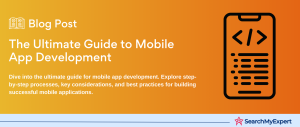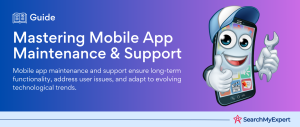What is Universal Windows Platform?
The Universal Windows Platform, commonly referred to as UWP, represents a significant evolution in the Windows ecosystem. It’s not just another platform; it’s a unified platform that allows developers to create applications that can run seamlessly across a wide range of Windows devices. From desktop computers and laptops to tablets, phones, Xbox consoles, and even the HoloLens, UWP ensures a consistent user experience.
At its core, UWP is about more than just the universality of applications across devices. It’s about providing a modern API for Windows apps. This API is built upon the foundation of the Windows Runtime, which was first introduced with Windows 8. The UWP not only supports the development of apps for Windows 10 but also ensures that these apps are safe, scalable, and capable of leveraging the full potential of the device they run on.
One of the standout features of UWP is its adaptive user interface. This means that UWP apps can automatically adjust their layout and controls based on the screen size and device type, ensuring optimal user experience. For instance, a UWP app running on a tablet might offer touch-friendly controls, while the same app on a desktop might prioritize mouse and keyboard input.
Another pivotal aspect of UWP is its emphasis on security and performance. All UWP apps are sandboxed, meaning they operate within a protected environment that limits their access to the system and user data. This not only ensures the safety of the user’s data but also enhances the overall stability of the system.
For developers, UWP offers a streamlined process. Instead of creating multiple versions of an app for different devices, they can now develop a single app that adapts and performs efficiently across all Windows devices. This not only reduces development time but also simplifies the maintenance and update processes.
In essence, the Universal Windows Platform is a testament to Microsoft’s vision for a unified and modern Windows experience. It’s a platform that bridges the gap between different devices, ensuring that users get a consistent and high-quality experience, no matter the device they’re using. For a deeper dive into the world of app development, you might want to explore this comprehensive guide on app development.

A Brief History
The journey of the Universal Windows Platform (UWP) is intertwined with the evolution of Microsoft’s vision for a unified and adaptive operating system. Let’s take a walk down memory lane to understand the origins and progression of UWP.
Windows 8 Era: The Birth of Modern Apps
The seeds of UWP were sown with the introduction of Windows 8. Microsoft introduced the concept of “Modern Apps” (initially termed “Metro Apps”). These were touch-friendly applications designed to run in a full-screen mode, offering a fresh and immersive user experience. Built on the Windows Runtime (WinRT) API, these apps marked the beginning of a new design philosophy, emphasizing simplicity and user-centric design.
Windows Phone: Convergence Begins
With the launch of Windows Phone 8.1, Microsoft took a significant step towards platform convergence. The introduction of the WinRT API for phone app development meant that there was a growing similarity between Windows and Windows Phone apps. Developers began to see the potential for more unified app development, setting the stage for what was to come.
Windows 10: The Dawn of UWP
The true realization of Microsoft’s vision came with Windows 10. UWP was introduced as a platform that would allow developers to create a single application that could run across all Windows devices, from PCs to phones, Xbox, and even IoT devices. The promise was clear: write once, run everywhere.
With UWP, Microsoft consolidated its various app models into a single platform. This meant that apps would have a consistent API, a unified store for distribution, and adaptive UI capabilities.
Project Reunion: Bridging the Gap
Recognizing the need to further unify and modernize the Windows app platform, Microsoft announced Project Reunion. This initiative aims to bring together the best of Win32 and UWP, allowing developers to access a broad set of Windows APIs and create apps with modern and legacy components.
In retrospect, the evolution of UWP is a testament to Microsoft’s commitment to simplifying the development process and enhancing user experience. From the early days of Modern Apps to the comprehensive capabilities of UWP, the journey has been about breaking barriers and fostering innovation.
For those interested in the broader landscape of app platforms, this article on different app development platforms offers a comprehensive overview.
Features of a UWP app
The Universal Windows Platform (UWP) is more than just a development platform; it’s a comprehensive ecosystem that offers a plethora of features designed to enhance both the developer’s and the user’s experience. Let’s delve into some of the standout features of a UWP app:
1. Adaptive User Interface (UI)
UWP apps are designed to be responsive. This means they can automatically adjust their layout and controls based on the screen size, resolution, and device type. Whether it’s a large desktop monitor or a compact mobile screen, UWP ensures the app looks and functions optimally.
2. Single Codebase
One of the primary advantages of UWP is the ability to maintain a single codebase for apps that run across multiple devices. This not only simplifies development but also streamlines updates and maintenance.
3. Secure and Sandboxed Environment
All UWP apps operate within a sandboxed environment. This ensures that apps have limited access to the system and user data, bolstering security and system stability.
4. Integrated with Windows Store
UWP apps are distributed through the Windows Store, ensuring a standardized installation, update, and uninstallation process. This also provides developers with a platform to reach millions of Windows users.
5. Rich API Access
UWP provides developers with access to a rich set of APIs, allowing them to leverage the full potential of the device, from sensors to graphics capabilities.
6. Live Tiles and Notifications
UWP apps can utilize Live Tiles to display real-time information on the Start Menu or Start Screen. Additionally, they can send push notifications, ensuring users stay informed and engaged.
7. Deep Integration with Windows Features
UWP apps can seamlessly integrate with core Windows features like Cortana, Windows Hello, and Continuum, enhancing functionality and user experience.
8. Monetization Opportunities
Through the Windows Store, developers have various monetization options, including in-app purchases, ads, and freemium models.
9. Cross-Device Experiences
With UWP, apps can offer cross-device experiences, allowing users to start a task on one device and continue it on another, thanks to features like Microsoft’s Project Rome.
10. Support for Multiple Languages
UWP apps support multi-language capabilities, ensuring that developers can cater to a global audience with localized content.
For those keen on understanding how UWP compares with other platforms, this insightful piece on various app development platforms offers a broader perspective.
UWP SDK (Software Development Kit)
The Universal Windows Platform Software Development Kit (UWP SDK) is a comprehensive set of tools and libraries provided by Microsoft to facilitate the development of UWP apps. It serves as the backbone for developers, offering everything they need to design, develop, test, and deploy apps for the Windows ecosystem. Let’s delve into the components and features of the UWP SDK:
1. Visual Studio Integration
The UWP SDK is seamlessly integrated with Visual Studio, Microsoft’s premier development environment. This integration provides developers with a robust IDE that supports code editing, debugging, profiling, and more, all tailored for UWP development.
2. Rich Set of Controls
UWP SDK offers a vast array of controls that developers can utilize to build their app’s user interface. From basic buttons and text boxes to advanced controls like maps and media players, the SDK has it all.
3. Adaptive UI Libraries
To ensure apps look and function optimally across various devices, the SDK includes libraries that support adaptive UI development. These libraries help apps adjust their layout and controls based on the device’s screen size and capabilities.
4. Device Emulators
Testing is a crucial phase in app development. The UWP SDK provides a range of device emulators, allowing developers to test their apps on different device profiles without needing the actual hardware.
5. APIs for Device Capabilities
UWP apps can leverage the full potential of the device they run on. The SDK provides APIs that allow apps to access device-specific features, such as sensors, cameras, and geolocation.
6. Integrated Debugging Tools
Debugging is made easier with the UWP SDK. Integrated tools allow developers to identify, diagnose, and fix issues in their code, ensuring the app runs smoothly.
7. Performance Profiling
The SDK includes tools that help developers analyze the performance of their apps. These tools provide insights into CPU usage, memory consumption, and other critical metrics.
8. Packaging and Deployment
Once the app is ready, the UWP SDK offers tools to package the app for distribution. Developers can create packages for the Windows Store or sideloading.
9. Extensive Documentation
Microsoft provides thorough documentation for the UWP SDK. From getting started guides to detailed API references, developers have a wealth of information at their fingertips.
10. Community Support
The UWP developer community is active and supportive. Developers can turn to forums, blogs, and other community resources for guidance, tips, and best practices.
In essence, the UWP SDK is a one-stop-shop for Windows app development. It equips developers with the tools and resources they need to bring their app ideas to life. For those interested in the broader spectrum of tools available for app development, this article on various app development tools offers a detailed overview.
UWP Design Guidelines
Design plays a pivotal role in the success of any application. For UWP apps, adhering to design guidelines ensures not only aesthetic appeal but also usability and consistency across devices. Microsoft has laid out a set of design principles and guidelines for UWP developers to follow. Let’s explore some of the key aspects of these guidelines:
1. Fluent Design System
Microsoft introduced the Fluent Design System as a way to create more intuitive, responsive, and beautiful UWP apps. It emphasizes five key elements:
- Light: Use of illumination to draw attention.
- Depth: Layered UI to express hierarchy.
- Motion: Smooth animations for transitions.
- Material: Visual feedback through textures.
- Scale: Designing for all screen sizes and devices.
2. Adaptive UI
UWP apps should adapt to different device families, screen sizes, and input methods. This means considering touch, mouse, keyboard, and even pen inputs when designing the user interface.
3. Consistent Navigation Patterns
Whether it’s a tab pattern, drill-down menus, or a master/details pattern, maintaining consistency in navigation ensures users can intuitively move through the app.
4. Clear Typography
Typography plays a crucial role in readability and user experience. UWP guidelines recommend using the Segoe UI font family and maintaining clear hierarchies with font sizes and weights.
5. Effective Use of Space
While designing for various screen sizes, it’s essential to use space effectively. This includes considering margins, padding, and ensuring elements aren’t too cramped or too spaced out.
6. Intuitive Icons and Controls
Icons should be clear and recognizable. UWP provides a set of standard icons, but custom icons can also be used as long as they’re intuitive and consistent.
7. Feedback and Interaction
Provide feedback to users. Whether it’s a button press, a swipe, or any other interaction, visual or haptic feedback ensures users know their action was registered.
8. Dark and Light Themes
UWP supports both dark and light themes. Designing for both ensures the app looks great regardless of the user’s system preference.
9. Accessibility
All UWP apps should be designed with accessibility in mind. This includes providing alt text for images, ensuring good contrast ratios, and supporting screen readers.
10. Localization and Globalization
UWP apps can reach a global audience. Designing with localization in mind ensures that the app can be easily adapted to different languages and regions.
In essence, the UWP design guidelines are about creating apps that are not only visually appealing but also user-friendly and accessible. Adhering to these guidelines ensures a consistent and delightful experience for all users. For a deeper understanding of design in the context of app development, this article on design and prototyping offers valuable insights.
10 Advantages of Windows Development Platform
The Windows Development Platform, with UWP at its core, has been a cornerstone for developers looking to create applications for the Windows ecosystem. Over the years, it has proven to be a robust and versatile platform, offering a myriad of advantages. Let’s delve into the top 10 advantages of the Windows Development Platform:
1. Broad Device Reach
Windows Development Platform allows developers to target a wide range of devices, from PCs and laptops to tablets, phones, Xbox consoles, and even IoT devices. This broad device reach ensures a larger potential user base.
2. Unified Development Experience
With UWP, developers can maintain a single codebase for apps that run across multiple Windows devices. This unified approach simplifies the development process and reduces the time and effort required for cross-device compatibility.
3. Robust Developer Tools
Microsoft offers a suite of powerful development tools, including Visual Studio, which is integrated with the UWP SDK. These tools provide everything a developer needs, from coding to debugging and profiling.
4. Secure Environment
UWP apps operate in a sandboxed environment, ensuring enhanced security. This design protects users from potential malware and ensures system stability.
5. Integrated Monetization Options
The Windows Store offers developers various monetization strategies, from in-app purchases to ads. This integrated approach simplifies the revenue generation process for developers.
6. Live Tiles and Rich Notifications
Windows Development Platform supports Live Tiles, allowing apps to display real-time information on the Start Menu. Additionally, rich notifications ensure user engagement and timely updates.
7. Seamless Integration with Windows Services
Apps developed on the Windows platform can easily integrate with core Windows services like Cortana, Windows Hello, and OneDrive, offering enhanced functionality and a richer user experience.
8. Performance Optimization
The platform is optimized for performance, ensuring that apps run smoothly and efficiently, providing users with a seamless experience.
9. Strong Community and Support
The Windows developer community is active and supportive. Developers have access to a plethora of resources, forums, and documentation, ensuring they always have the help they need.
10. Future-Ready Development
With continuous updates and innovations from Microsoft, the Windows Development Platform ensures that apps are future-ready, compatible with upcoming Windows versions and devices.
For a deeper dive into the world of app development and its various facets, this article on app development stages offers a comprehensive perspective.
Windows 10 Apps
Windows 10, Microsoft’s flagship operating system, brought with it a renewed focus on apps and the Windows Store. The introduction of UWP meant that apps could now be developed once and deployed across a myriad of Windows devices. Let’s explore the landscape of Windows 10 apps and what they bring to the table:
1. Diverse App Ecosystem
Windows 10 boasts a diverse app ecosystem, ranging from productivity tools and games to multimedia apps and utilities. Whether you’re looking for a photo editing tool or a finance tracker, the Windows Store has got you covered.
2. Seamless Experience Across Devices
Thanks to UWP, apps on Windows 10 offer a consistent experience across devices. Whether you’re using a Surface tablet, a Windows phone, or a desktop PC, the app’s look and feel remain uniform.
3. Integration with Cortana
Many Windows 10 apps integrate seamlessly with Cortana, Microsoft’s virtual assistant. This allows for voice commands, reminders, and a more interactive app experience.
4. Live Tiles
Windows 10 apps can utilize Live Tiles on the Start Menu, offering real-time updates, notifications, and quick access to key app features.
5. Enhanced Security
Windows 10 apps, being UWP apps, operate in a sandboxed environment. This ensures that the apps are secure, protecting user data and the system.
6. Regular Updates
Apps on Windows 10 receive regular updates via the Windows Store. This ensures that users always have the latest features, bug fixes, and security patches.
7. In-app Purchases and Monetization
Many apps on Windows 10 offer in-app purchases, allowing developers to monetize their apps effectively. Users can purchase premium features, additional content, or even subscriptions.
8. Continuum Support
One of the standout features of Windows 10 is Continuum, which allows apps to adapt to different modes. For instance, a 2-in-1 device can switch between tablet and desktop modes, and the apps adjust accordingly.
9. Touch, Pen, and Keyboard Input
Windows 10 apps support various input methods, from touch and pen to the traditional keyboard and mouse. This flexibility enhances the user experience, especially on hybrid devices.
10. Engaging Multimedia Capabilities
Windows 10 apps can leverage the OS’s robust multimedia capabilities, from 3D graphics and animations to immersive audio and video playback.
The evolution of apps on Windows 10 showcases Microsoft’s commitment to creating a unified and user-friendly ecosystem. For those interested in the broader spectrum of desktop app development, this article on desktop apps provides a detailed overview.
The Future of Windows Development Platform
The tech landscape is ever-evolving, and the Windows Development Platform is no exception. With Microsoft’s continuous commitment to innovation and improvement, the future of the Windows Development Platform looks promising. Let’s delve into what the future might hold:
1. Project Reunion
Microsoft has introduced Project Reunion as an initiative to unify the Windows app platform. It aims to bridge the gap between Win32 and UWP, allowing developers to access modern Windows features from any app type.
2. Enhanced Integration with Azure
As cloud computing continues to dominate, we can expect tighter integration between the Windows Development Platform and Azure, Microsoft’s cloud service. This will facilitate more cloud-powered apps with enhanced scalability and performance.
3. AI and Machine Learning
With AI and machine learning becoming increasingly prevalent, the Windows Development Platform will likely offer more tools and APIs for developers to integrate these technologies into their apps, enabling smarter and more personalized user experiences.
4. Augmented and Virtual Reality
Windows Mixed Reality is just the beginning. The future might see more AR and VR capabilities integrated into the platform, opening doors for more immersive apps and experiences.
5. Cross-Platform Development
With tools like Xamarin and the increasing popularity of web apps, the Windows Development Platform will continue to emphasize cross-platform development, allowing developers to reach wider audiences across different operating systems.
6. IoT and Edge Computing
As the Internet of Things (IoT) expands, Windows will likely offer enhanced support for IoT devices, coupled with edge computing capabilities for faster, localized data processing.
7. Continuous Updates and Iterations
Microsoft has adopted a “Windows as a Service” model, meaning regular updates and iterations. This ensures that the platform stays current, secure, and in line with the latest tech trends.
8. Focus on Accessibility
The future will see an even stronger focus on accessibility, ensuring that apps cater to all users, regardless of their physical or cognitive abilities.
9. Gaming and Entertainment
With Xbox being a part of the Windows ecosystem, we can anticipate further advancements in gaming and entertainment apps, leveraging powerful graphics, real-time interactions, and cloud integration.
10. Collaboration and Remote Work Tools
The recent global shift towards remote work has highlighted the importance of collaboration tools. The Windows Development Platform will likely introduce more features and tools to facilitate remote work and collaboration.
The horizon for the Windows Development Platform is vast and full of potential. As technology advances, so will the platform, ensuring that developers have the tools and resources they need to create cutting-edge apps. For a broader perspective on the future of app development, this article on app marketing strategies offers insights into upcoming trends.
Conclusion
The Universal Windows Platform (UWP) and the broader Windows Development Platform have revolutionized the way developers approach app creation for the Windows ecosystem. By offering a unified, adaptive, and feature-rich platform, Microsoft has provided developers with the tools they need to craft applications that are not only visually appealing but also functional and secure.
From its inception, UWP promised a single codebase for a multitude of devices, and it has delivered on that promise. Whether it’s a desktop, a tablet, an Xbox, or even IoT devices, the experience remains consistent and optimized. This adaptability, combined with the platform’s robust security features, makes it a preferred choice for many developers.
Moreover, the continuous support and updates from Microsoft ensure that the platform remains current and in line with the latest technological trends. With initiatives like Project Reunion and a growing emphasis on AI, AR, VR, and cloud integration, the future of the Windows Development Platform looks brighter than ever.
In a world where technology is rapidly evolving, platforms like UWP play a crucial role in ensuring that developers can keep up with the pace, innovate, and deliver outstanding applications to users. As we’ve explored the various facets of the platform, from its history and features to its benefits and future prospects, one thing is clear: the Windows Development Platform is here to stay, and it will continue to shape the future of app development.
For those who are keen on exploring other aspects of app development, this comprehensive guide on app development stages offers valuable insights into the entire process.
Unparalleled Expertise – Dive into the world of top App Development Companies.
Frequently Asked Questions (FAQs)
-
What is the Universal Windows Platform (UWP)?
UWP is a platform developed by Microsoft that allows developers to create applications that can run across multiple Windows devices, such as PCs, tablets, phones, and Xbox, using a single codebase.
-
How does UWP Differ from Traditional Windows Applications?
Traditional Windows applications are typically built for a specific version of Windows and might not be compatible across all devices. In contrast, UWP apps are designed to be adaptive and can run on any device that supports the Windows 10 operating system.
-
Is UWP only for Windows 10?
While UWP is optimized for Windows 10, it also supports earlier versions of Windows with some limitations. However, to leverage all the features of UWP, Windows 10 is recommended.
-
Can UWP apps be used on mobile devices?
Yes, UWP apps are designed to be adaptive, which means they can run on any Windows device, including mobile phones.
-
Are UWP Apps Secure?
Absolutely. UWP apps operate in a sandboxed environment, ensuring enhanced security and protection against potential threats.
-
How do updates work for UWP apps?
UWP apps receive regular updates via the Windows Store, ensuring users always have access to the latest features, bug fixes, and security patches.
-
What is the Fluent Design System in UWP?
The Fluent Design System is a design approach introduced by Microsoft for UWP apps. It emphasizes elements like light, depth, motion, material, and scale to create intuitive and visually appealing applications.
-
Can I monetize my UWP app?
Yes, the Windows Store offers various monetization strategies for UWP apps, including in-app purchases, ads, and subscriptions.
-
What is Project Reunion in the context of Windows development?
Project Reunion is an initiative by Microsoft to unify the Windows app platform, bridging the gap between Win32 and UWP and allowing developers to access modern Windows features from any app type.
-
Are there any resources or communities for UWP developers?
Certainly! Microsoft provides extensive documentation, tutorials, and forums for UWP developers. Additionally, there are many online communities and forums where developers can seek advice, share knowledge, and collaborate.
For a deeper understanding of the Windows Platform and its various aspects, this article on the Windows platform offers a comprehensive overview.
Table of Contents
Toggle






